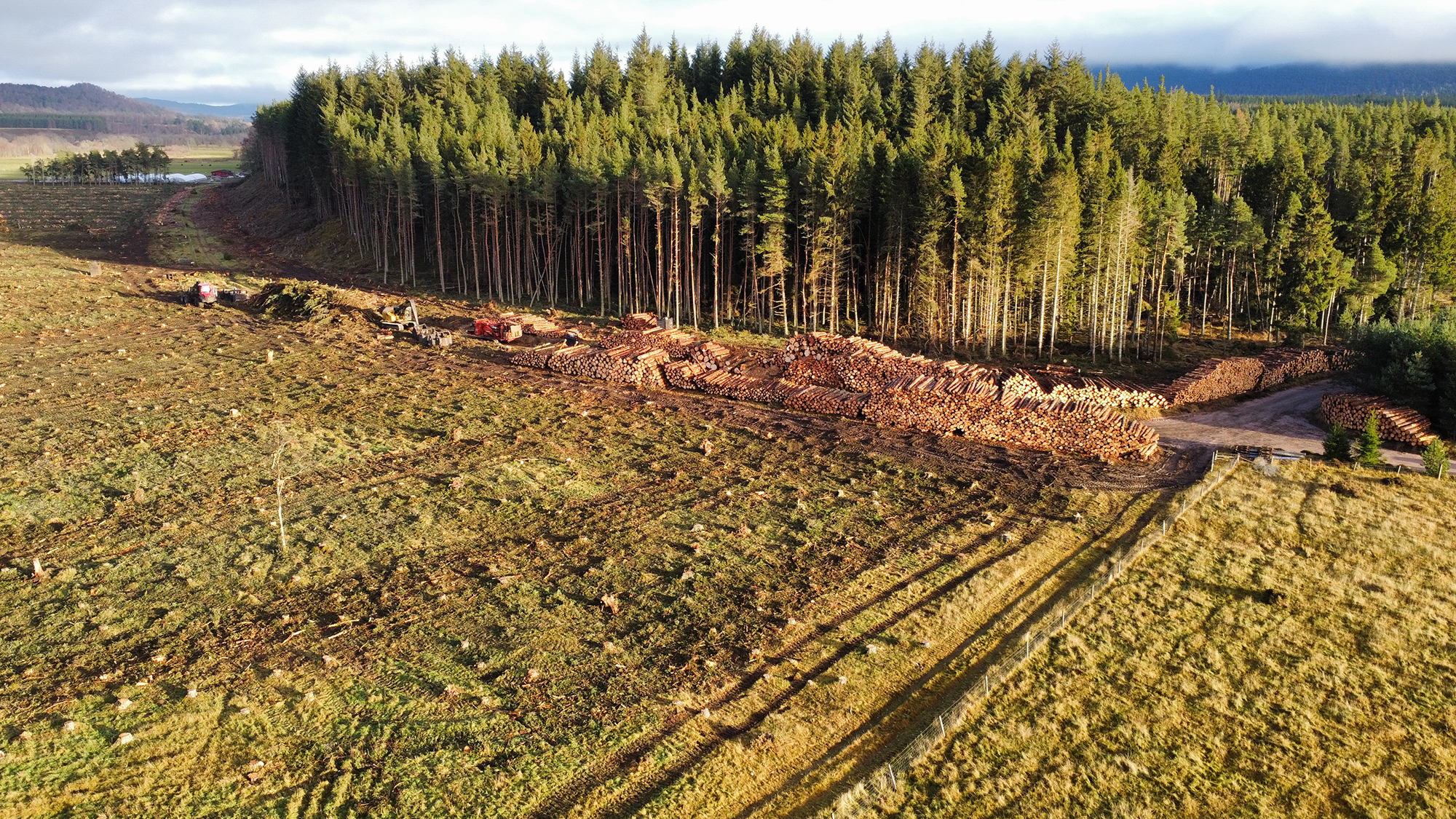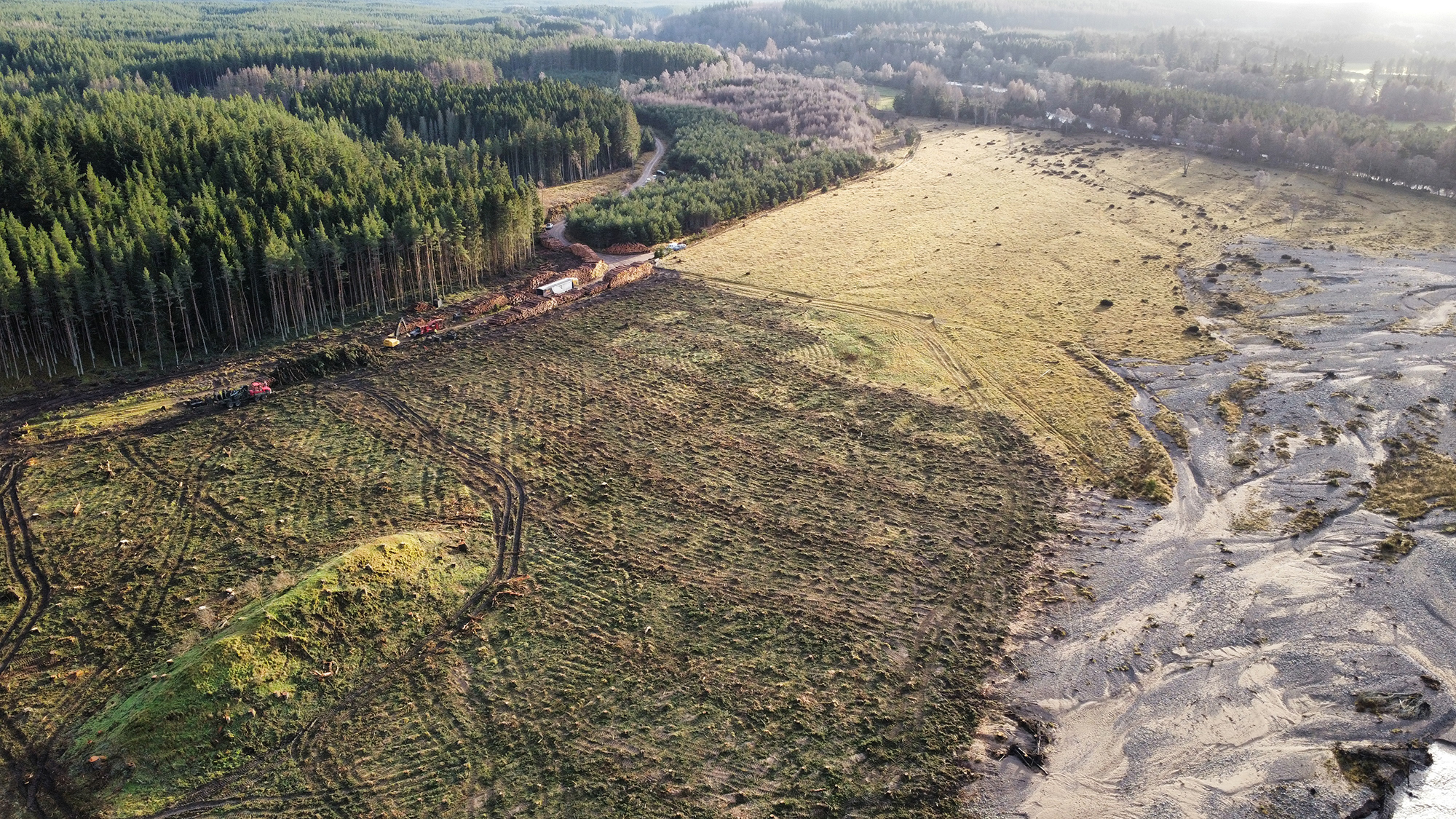

In the southern end of the Cairngorms Connect Partnership, where two Strathspey rivers meet, natural solutions are being used to protect rare species and restore designated habitats.
Forestry and Land Scotland has removed 40 hectares of mature conifer plantation to restore a natural floodplain at the point where the River Feshie meets the River Spey.
It is hoped the newly created open space, together with the regeneration of native tree species, will help slow the River Feshie when 'in spate' (when the water level is higher and flowing faster due to heavy rain). Slowing the flow of water will enable gravel that is being swept along by the river to deposit safely without being washed down stream. The increased open space surrounding the river will allow water to disperse more widely.
 Forestry and Land Scotland staff and contractors clearing mature plantation to restore a natural flood plain at the point where the two rivers meet. Credit: Cairngorms Connect
Forestry and Land Scotland staff and contractors clearing mature plantation to restore a natural flood plain at the point where the two rivers meet. Credit: Cairngorms Connect
Forestry and Land Scotland Environment Advisor Colin Leslie said: “The River Feshie is a highly dynamic river and the large amounts of gravel that the river can transport when in spate regularly causes flooding issues. At the point where the River Feshie meets the River Spey, the gravel is deposited and forms an alluvial fan that also creates a plug effect.”
Alluvial fans can be found at the junction of rivers and are a fan-shaped deposit of sediment and other materials that have been swept up by flowing water. As these deposits build up, they can create an underwater dam which can raise the river levels and flood land both up and down stream.
 Areal shot of the Feshie Fan showing the alluvial fan. Credit: Cairngorms Connect
Areal shot of the Feshie Fan showing the alluvial fan. Credit: Cairngorms Connect
Colin continues, “Previous management involved building hundreds of metres of flood defences – some built by Napoleonic prisoners of war – and dredging the river channel. Neither of these activities are suitable in such important habitats.
“The area will now be left to regenerate with native species and the combination of riparian woodland and the open area should create a nature-based solution to a long-term problem.”
Forestry and Land Scotland staff and local contractors had to work in a challenging environment that included operating heavy machinery in the flood plain and near highly designated habitats.
The development and effectiveness of the site will be monitored as part of the Cairngorms Connect Partnership over the coming years.
Cairngorms Connect Delivery Manager Steve Blow describes the positive changes the Partnership hopes to see from this work. “As the river continues to evolve, it will develop a more natural floodplain with wildflower rich grassland, wetland areas, and gravel banks . In the longer term, native trees and shrubs will colonise the felled area adding to the diversity and wildness of the habitat, helping to slow the flow even more.”
 Mysterious large mound uncovered during the felling. Credit: Cairngorms Connect
Mysterious large mound uncovered during the felling. Credit: Cairngorms Connect
Colin Leslie added that the work also revealed the source of a local legend. “A large mound – fabled to be the burial site of a Viking ship – was uncovered in the middle of the felled area. Despite archaeological investigations having shown it to be a natural feature there are some still to be convinced and are keeping a close eye on it.”
Conservationists in Scotland have kicked off a unique four-month ‘Easter egg hunt’ involving one of the UK’s rarest and most beautiful moths.
Five years of raptor data has been published by WildLand Cairngorms in a new report showing the positive impact of ecological restoration work.